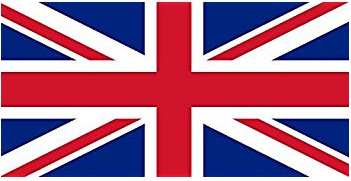- Successful prediction by a hypothesis is considered strong
evidence in support of its validity. Thus, tests for various logical consequences of a hypothesis are devised. For example, Einstein’s general theory of relativity required that a ray of light passing a massive object (such as a star) would be bent by the gravitational field of that object. This prediction was not tested until years after the theory was first published, and its verification then provided strong support for the theory. Most scientists wouldn’t claim that a hypothesis represents reality exactly, but is an approximation of it.
There are primary, secondary, and lay sources for information about life extension. Primary literature consists of scientific papers, which are usually published in refereed journals. Refereed journals are those which have a panel of scientists who review papers before publication to judge whether they have an adequate experimental design, whether the description of methods and materials is adequate for other scientists to replicate the experiment, and whether adequate data are presented to justify the conclusions reached.
The refereed journals, because of this peer review, are sometimes reluctant to publish papers with unorthodox findings. Secondary sources of information are magazines that report on scientific papers published in primary journals or presented at scientific conferences. The excellent publications Science News and Scientific American are two good examples of secondary sources. In the main, lay sources of information are unsatisfactory, as in our experience, they may contain over 50 percent incorrect statements. Lay sources include newspapers and popular magazines.
In a survey of several hundred college students conducted by Barry Singer and Victor A. Benassi, “… we were surprised to find that ‘scientific media’ was also listed as a source of occult beliefs—more frequently than popular media, personal experience, personal faith, or logical arguments. When the students were asked afterwards to list examples of the scientific media in question, however, not one mentioned even a single genuinely scientific source. Instead, Reader’s Digest and the National Enquirer were occasionally cited as ‘scientific media,’ as were such films as The Exorcist and Star Wars (i.e. ‘the Force’). Television ‘documentaries’ were also frequently mentioned, with the documentary ‘Chariots of the Gods?” being the single most frequently cited ‘scientific’
source.”
It has long been known that the expectations of people involved in an experiment can influence or even determine the results. For example, if patients in pain are given a sugar pill and told it is morphine, 40 percent of those receiving the sugar pill will experience relief or reduction of pain, at least temporarily. Because of such subjective reactions, well-designed human experiments are done in what is called a double-blind fashion. That is, the treatments and placebos (non- active ersatz treatments like the sugar pills) are coded by one group of researchers, administered by another group (who don’t know which are the “real” treatments and which are
placebos), and the results are analyzed by a third group of researchers who do not know which subject received a placebo
and which received the treatment being tested. In this way,
an experimenter’s and patient’s desires and expectations are
kept apart from actual drug performance. Experiments which
are not done in the double-blind fashion are always subject to
question because of human biases.
Dr. Andrew Weil has pointed out that the placebo effect can be a legitimate form of therapy. About 40 percent of the population is a strong placebo, responder (showing significant initial improvement with a placebo). Clinical patient’s expectations of pain relief can provide some relief, at least temporarily. After a week of regular placebo medication, only about10 percent of test subjects still show the positive placebo response.
A form of evidence often cited in lay health and nutrition
magazines is what is called anecdotal evidence. Anecdotal evidence consists of individual case histories which are used to
support a particular treatment. It is important to realize that
these individual cases can never be proof of anything because
of individual-to-individual biochemical variation. Usually such
treatments are not administered double-blind, and therefore
the results are strongly subject to biases. When people expect
something to happen (like pain relief with a drug that is really
a sugar pill), it often does. But this-is not evidence for the efficacy of a treatment. On the basis of individual cases, you can
find people claiming therapeutic benefits from almost any
imaginable substance.
Are you interested in life extension products?
mod4all ships all major brands of Modafinil from the UK
All products shipped from the UK by tracked post. We guarantee delivery.
We guarantee delivery, free reshipping.
Any questions at all about payments, shipping, etc. Anything at all, just email us.

Comments (0)